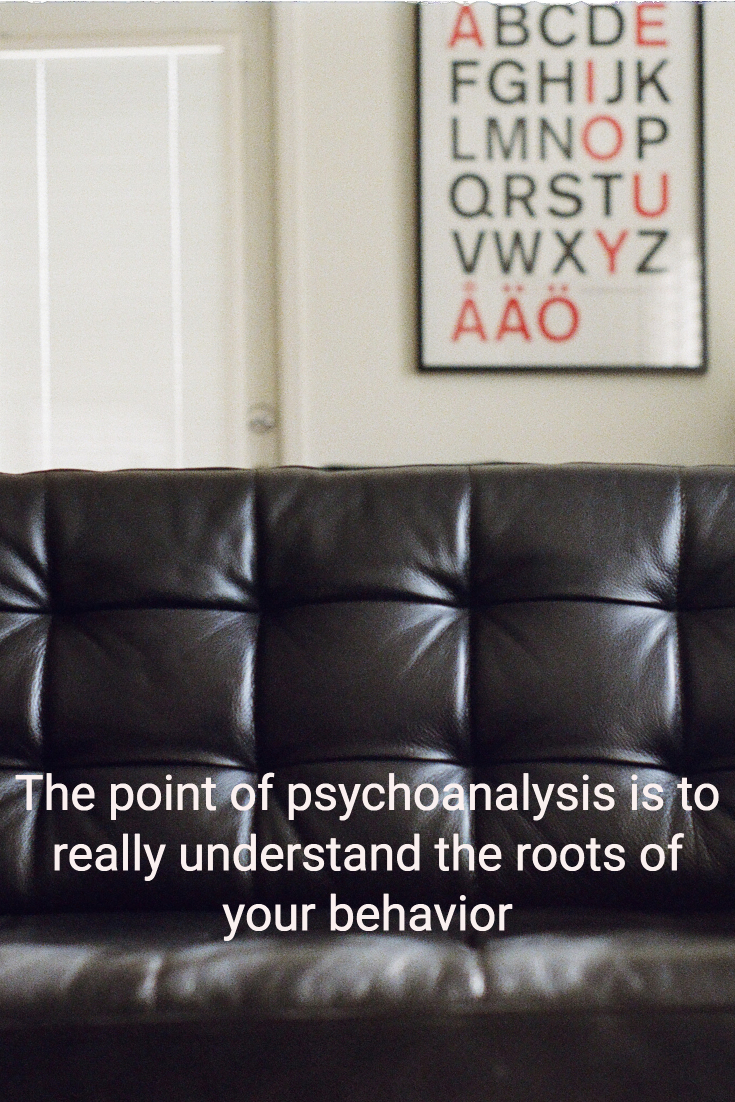In this article I'll spend some time discussing Psychoanalytic Therapy.
History of Psychoanalytic Therapy
In the early 1880s, Freud became interested in Josef Breuer’s work with “Anna O.”, who was experiencing hysteria.
Breuer believed that her condition was caused by her father’s death.
Breuer then used hypnosis in treating Anna O.
He explained that when she was in a trance, her symptoms appeared.
But these symptoms disappeared when she came out from the trance.
Sigmund Freud was lucky because, in 1885, he got the chance to study in Paris with Jean Charcot.
Charcot was famous because of his work with people with hysteria.
During that time, hysteria was seen as a mental disorder only meant for females with marks of paralysis, blindness, and deafness.
According to Charcot, hypnosis is the key to cut symptoms of hysteria and recalling traumatic experiences.
With this nature of the unconscious, Freud’s interest grew.
When Freud returned to Vienna, he discussed what he learned with his friends.
But his friends were very skeptical about the idea that hypnosis cures hysteria.
But, Freud continued this practice in his neurological practice.
But he noticed not all people are suitable candidates for the procedure.
The reason for this is because some can be hypnotized without being able to recall what happened during the trance.

How the therapy works
The therapist gives time for “talk therapy”.
He listens to the client when he talks about his life.
Then, the therapist searches for important events that contribute to the client’s problems.
According to psychoanalysts, the cause of maladaptive behaviors is usually from the childhood and unconscious feelings and thoughts.
Psychoanalysis is done 3-4 times a week with the involvement of a couch.
- The therapy wants to discover childhood experiences to understand one’s self. *
The Role Of The Therapist
The psychoanalyst acts as a guide as he explores the client’s inner life.
He discovers the client’s ideals, expectations, hopes, desires, and feelings of guilt and shame.
The psychoanalyst also establishes a harmonious relationship with the client.
By doing this the client can disclose himself without hesitations and fear of pressure.
Contrary to belief that psychoanalyst takes the notion of “silent therapist”, the psychoanalyst takes on the notion of “analytic neutrality”.
This concept means that the therapist does not take sides in the client’s hardship and cause of pain.
If a client feels guilty, the therapist will explore the reasons for this guilt.
But the therapist will not encourage the client to feel that way all throughout the session and his life.
What Is Psychoanalytic Therapy
Methods Used In Psychoanalytic Therapy
Free Association
In this method, the adult client is encouraged to say whatever comes into his mind.
This gives the client the chance to stop editing thoughts that could be seen by others as unreasonable, embarrassing, deviant or sexual.
Freud believed that people have been censoring these things to protect themselves.
This technique is vital.
It enables clients to release themselves from the domination of their unconscious.
This will lead to freedom from symptoms of maladaptive behaviors.
Afterward, the client’s long-hidden basis of problems will be discovered.
The process starts with the therapist asking the client to sit on a couch, in a reclined position and behind the therapist.
With this, the client will be in a relaxed state, and he will not be experiencing any barrier in conveying his stories.
The client will also be able to remember more past experiences and organize these events after a development of insight.
The psychoanalyst will see the connection between what the client says from one idea to the next.
Every session will lead to progress in understanding the unconscious thoughts and motivations of the adult client.
Nowadays Free association is also applied to children through play therapy, art therapy, and storytelling.
Anna Freud developed this.
Toys and games can help children reveal, symbolically, their fears, fantasies, and defenses.
Free association can assist the therapist understand children’s conflicts in life.
For example, a child’s disobedience could be a result of having negative and aggressive wishes.
Psychoanalyst could also instruct a child to draw something and tell something about it.
Recurring themes are used to understand the child better.
For which disorder is psychoanalytic therapy best used
Psychoanalytic therapy is best for problems that are causing illnesses like phobias, anxieties, depression, and compulsions.
This will give clients the insight of what their problem is and what should be done to end it.
I hope you have enjoyed this article about Psychoanalytic Therapy.